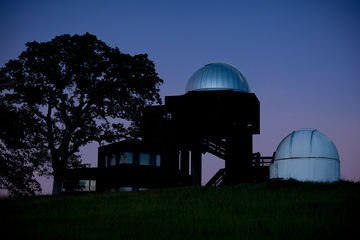PHYSICS DISSERTATION DEFENSE: Yuval Gannot

Linda Cicero
Ph.D. Candidate: Yuval Gannot
Research Advisor: Steven Kivelson
Date: May 25, 2022
Time: 10:00 AM
Location: McCullough building, room 335
Zoom Link: https://stanford.zoom.us/j/92154478924
Zoom Password: email nickswan [at] stanford.edu (nickswan[at]stanford[dot]edu) for password.
Title: Quantum phases on ladders and cylinders
Abstract: In this talk, I will consider two different analytic approaches to understanding quantum phases on ladders and cylinders. Both are designed to complement density matrix renormalization group (DMRG), a highly reliable numerical method which is well-adapted to cylinder geometries.
In the first part of the talk, I will approach the cylinder problem from the weak-coupling limit, where one can calculate using the renormalization group (RG). This approach compliments DMRG in the sense that weak coupling is precisely where DMRG simulation is most challenging due to long correlation lengths. For the case of the half-filled triangular lattice Hubbard model on three- and four-leg cylinders, I will describe the relation between the small-U phases predicted by the RG analysis and an intermediate-U spin liquid phase found in recent DMRG studies.
In the second part of the talk, I will approach the cylinder problem from the large-circumference limit, addressing the question of how various two-dimensional phases behave when restricted to cylinders of large but finite circumference. I will focus on the superconducting case, explaining how various well-known two-dimensional results like the order parameter correlation function and the quasiparticle gap (or lack thereof) are approached as a function of increasing circumference. I will also describe ways to mitigate finite-size errors. The hope is that these findings can be used to help extrapolate the results of DMRG studies at finite circumference all the way to the two-dimensional limit.